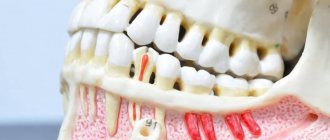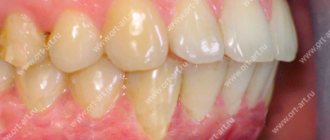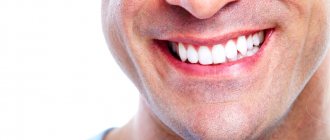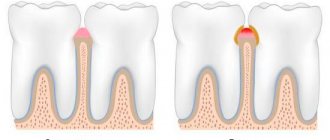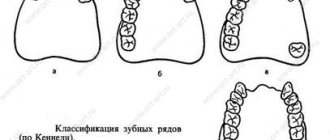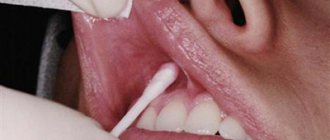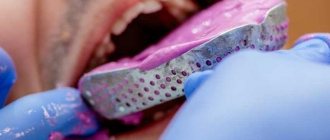Introduction
Defects of the palate and oronasal anastomosis are an urgent and pressing problem in reconstructive surgery.
Through defects and anastomosis can be a primary problem, as in the case of congenital clefts, and can also be a consequence of flap necrosis or infectious complications after primary or repeated uranoplasty, as well as resections for benign neoplasms, necrosis and sequestrectomy, post-traumatic injuries of the upper jaw. One way or another, this is a serious functional illness that has physiological, social consequences and can significantly damage the development of a child or young person if observed at a young age.
The variety of surgical techniques used is based on the variability of the shape, size of the defect, the condition of the surrounding tissues and the general somatic condition of the patients. For small defects and intact adjacent tissues, local plastic techniques are often used. But the problem is that with this option of closing the defect, the risk of relapse is quite high. These are complex defects for the surgeon, despite their small size, and are associated with communication between the oral and nasal cavities and/or the maxillary sinus (the presence of a fistula). The aggressive environment of the nasal cavity provokes constantly persistent inflammation and prevents adequate wound healing. Therefore, the choice of surgical tactics should be in favor of well-supplied axial flaps.
FAMM (facial artery musculomucosal) flap - a flap with an axial type of blood supply - was described for the first time. J. Pribaz et al. in 1991, today it is one of the most commonly used flaps for the reconstruction of intraoral defects [1–4].
The FAMM flap is supplied by the facial artery. The facial artery, with an average diameter of 1.5-2 mm, with a blood flow speed of 20-30 mm/s, is a reliable source of blood supply to the flap [5].
The flap includes the buccal mucosa, submucosa, part of the buccal muscle, as well as a rich perforating blood flow from the facial artery, which allows you to cut out a flap in the cheek area up to 8-9 cm long, up to 2.0 cm wide, up to 0.5 cm thick - depending on the size of the defect in the floor of the mouth.
A well-supplied portion of the buccal muscle included in the flap allows for reliable tamponing of the oronasal and/or oroantral anastomosis, which is a good prevention of the development of infectious complications and, as a consequence, necrosis of the flap.
Various modifications of the FAMM flap are described in detail in the literature. To cover defects of the anterior palate, a FAMM flap is used on the superior basis on the proximal part of the facial artery with reverse blood flow. To close defects predominantly in the posterior part of the hard palate, a flap is used on the lower pedicle, the distal fragment of the facial artery with direct blood flow [6].
To eliminate defects of the tongue and floor of the mouth, a modification is used - a transverse FAMM flap [7].
The cheek is an adjacent anatomical site to the palate, and variations in flap design (superior and inferior bases) allow for convenient rotation of the flap into the defect area.
To date, there is no “gold standard” of operations for re-closing palate defects with relapse of oronasal anastomosis. This problem is relevant and requires the development of new algorithms in the selection of donor material and its use in eliminating various defects of the palate.
The purpose of the study is to develop an algorithm for eliminating defects of the palate and alveolar process of the upper jaw using various modifications of the FAMM flap depending on the location and size of the defect.
Local plastic surgery with opposing triangular flaps
The theoretical justification and objectification of the method were carried out by A. A. Limberg in his two monographs (1946, 1963). The method is based on redistribution, stretching and contraction of tissue when cutting out and moving opposing triangular flaps. Triangular flaps are formed with three equal-length incisions, among which there is a middle incision and two lateral ones, drawn at certain angles from the ends of the middle incision. Triangular flaps can have equal angles (symmetrical triangular flaps) and unequal angles (asymmetrical triangular flaps). Triangular flaps include skin and subcutaneous fat. The movement of triangular flaps detached from the subcutaneous fascia is accompanied by an increase in tissue in the direction of the middle incision and their loss in the direction of the line connecting the ends of the lateral incisions.
The gain and loss of tissue when moving symmetrical triangular flaps are identical in size and are evenly distributed towards the ends of the middle and lateral incisions (Fig. 1).
The use of symmetrical opposing triangular flaps is possible if there are equal reserves of movable tissue around the shortened scar. The movement of triangular flaps in an asymmetrical figure is accompanied by unequal mobility of the flaps and unequal growth and loss of tissue at the ends of the incisions of the figure. For example, in a figure with angles of 30-90°, a flap with an acute angle is movable, tissue loss is mainly concentrated in the area where the base of the flap is cut, and tissue growth will occur mainly in the area where the base of this flap with an acute angle will be moved .
It follows that asymmetrical figures of opposing triangular flaps are used with unequal, often one-sided, reserves of movable tissue. Mathematical calculations by A. A. Limberg showed that tissue growth
Rice. 1. Models made of canvas to show the counter exchange of two triangular flaps of an asymmetrical figure [Limberg A. A., 1963]. in the direction of the middle incision increases as the angles of the opposing triangular flaps increase.
It should be remembered that cutting out and moving opposing triangular flaps leads to concomitant cone-shaped changes in the surface topography, which become noticeable when the angles of the flaps exceed 90-100°. With smaller angles of opposing triangular flaps, cone-shaped changes are not detected due to the elasticity of normal skin.
Local plastic surgery with opposing triangular flaps on the face and neck is used for the following indications:
Rice. 2. Excision of a scar with a salivary fistula with plastic movement of normal tissues. 1) for counter tissue exchange; 2) for the purpose of lengthening in the direction of the middle incision; 3) to replace obvious and hidden defects of the face and neck.
Counter tissue exchange is performed using symmetrical triangular flaps with angles ranging from 30° to 45°. Such flaps are used to correct the position of the outer eyebrow, corners of the eyelids and lips, as well as to create favorable conditions for the healing of flaccid granulating wounds and salivary fistulas (Fig. 2). The lengthening of the line of the middle section in these figures is small and has no practical significance.
The elongation in the direction of the middle section of the figure of the opposing triangular flaps reaches significant values at angles of 60, 75, 30, 90 and 45° without identifying cone-shaped changes in the surface.
When eliminating shortened skin scars after burns and mechanical damage on the face, neck, fingers, a positive result can be enhanced by the use of several figures of opposing triangular flaps.
Depending on the reserves of movable tissue near the scars, the figures of the opposing triangular flaps can be symmetrical or asymmetrical and located sequentially one after another along the scar.
In case of sharply shortened or multiple scar cords, the reserves of moving tissue can be most fully used by combining the figures of opposing triangular flaps, when the middle or one of the side cuts of the figures is common.
When planning an operation to eliminate neck contracture caused by multiple scar cords, one must take into account the physiological characteristics of the skin of its various parts. When moving the head back and to the sides, the skin of the upper neck above the level of the cricoid cartilage is subjected to the greatest stretching. In this regard, using the reserves of mobile tissue in the lateral sections of the neck, the greatest increase in tissue should be concentrated in its upper section.
Plastic surgery with counter triangular flaps in the treatment of neck contractures can be multi-stage, since as the range of motion in the cervical spine increases after the first operation, new cords are identified and new reserves of movable tissue are determined, even in the same places where they were used in the previous operation.
Material and methods
In the period from 2016 to 2022, 18 patients aged from 6 to 60 years with a current diagnosis of a defect of the hard palate and/or alveolar process and oronasal anastomosis were operated on in the Department of Reconstructive, Plastic Maxillofacial Surgery of the Federal State Budgetary Institution "Central Research Institute of IIS and Maxillofacial Surgery", Surgical treatment was performed to cover the defect and oronasal anastomosis with a FAMM flap.
Most patients have a history of multiple operations for the underlying disease in the scope of primary uranoplasty, reuranoplasty, the number of previously undergone surgical interventions on the palate in this group of patients ranges from 1 to 8-10, and yet in all cases there was a recurrent residual defect coupled with cicatricial -changed surrounding tissues due to repeated surgical interventions, inflammatory and necrotic processes. The size of the defect from 3 to 40 mm, the need to separate two anatomical zones - the oral and nasal cavity / maxillary sinus, as well as the presence of a persistent inflammatory process in the nasal cavity / maxillary sinus dictated the need to bring in a sufficient amount of well-supplied tissue from another anatomical area.
The psychological and emotional state of these patients makes it a priority to choose a traumatic surgical intervention, without serious donor damage, an optimal surgical intervention in terms of time, with a minimization of the rehabilitation period associated with lower risks in case of failure.
At the first stage of treatment of such patients, the primary task is the reliable and effective elimination of the oronasal anastomosis with a soft tissue flap; in the future, patients are planned to undergo bone reconstruction followed by dentofacial rehabilitation.
In all 18 cases, to plan a flap in the projection of the facial artery, as an instrumental method of research, patients underwent duplex ultrasound scanning of facial vessels with determination of qualitative and quantitative characteristics of the facial arteries, which in 100% of cases helped to determine the localization of the facial artery in a typical place, as well as to register a satisfactory blood flow speed and vessel diameter.
In cases of extensive bilateral defects, CT angiography of the vessels of the face and neck was performed to visualize the bone edges and determine the true size of the defect, which is the most reliable method of preoperative diagnosis and precision flap planning.
Briefly about the treatment method
Elimination of skin defects using nearby tissues is called local plastic surgery. Local plastic surgery is used, in particular, in the presence of fresh injuries, cicatricial deformities after traumatic injuries, congenital defects, and also defects after removal of tumors in the skin and subcutaneous tissue. As defined by A.A. Limberg (1963), local plastic surgery is the main method of treating scar deformities or defects, as well as an additional method of plastic surgery after tissue transplantation from distant areas of the body.
conclusions
The optimal way to reconstruct small and medium-sized through defects of the palate and alveolar process is the reconstruction method with a FAMM flap; depending on the location and size of the defect, various flap configurations can be used with convenient positioning of the pedicle in the free interdental space near the defect. If one of the linear dimensions of the flap exceeds 35 mm, it is worth considering the possibility of using two FAMM flaps to close the defect and the possibility of recruiting the mucous membrane of the soft palate adjacent to the defect to freely align the edges of the flap with the edges of the defect. An obligatory component of the flap is an axial vessel (facial artery, a component of the FAMM flap), supplying blood to the recruited area of the buccal muscle (anterior or posterior, respectively), otherwise the flap will no longer be axial/perforating and there will be a risk of flap necrosis and defect recurrence. The choice of the donor site of the cheek is determined by the presence of interdental space, which makes it possible to conveniently insert the stem without resorting to tooth extraction, which avoids unwanted cosmetic defects in the dentition. In case of defects of the anterior and middle parts of the hard palate, we recommend using the FAMM flap configuration on the upper base, and depending on the size of the defect (if one of the linear dimensions exceeds 35 mm), consider the possibility of plastic surgery with two FAMM flaps with possible recruitment of the adjacent mucous membrane of the hard palate palate for free comparison of the edges of the flap with the edges of the defect.
Small isolated defects located strictly within zone II3a are well suited for reconstruction with a buccal mucomuscular flap on an inferior basis with a stem inserted in the retromolar region.
We do not recommend eliminating defects of the soft palate with a buccal mucomuscular flap due to the fact that this will not restore the phonation and swallowing functions of the soft palate, and we suggest looking for other alternative techniques.
Postoperative complications were presented in the form of ischemia of the end fragment of the flap (in 2 cases), which did not affect the successful outcome of the operation. In 2 cases, a hematoma was observed in the donor area, which did not require additional intervention. No cicatricial contracture or impaired mouth opening was observed.
As a result, 5-7 days after the operation, the patients returned to their normal rhythm of life and diet; no problems with breathing, speech, or taking liquid or solid food were found.
How often and why do they appear?
The reasons for the appearance of residual palate defects after primary surgery are extremely varied:
- the use of surgical techniques leading to the formation of defects in the anterior part of the hard palate;
- formation of the vault of the palate in the postoperative period;
- complicated course of the postoperative period (ARVI, exacerbation of chronic sluggish diseases that cause disruption of the normal course of wound processes, etc.).
The frequency of their occurrence varies, mainly depending on the technique used for primary palatoplasty. The highest probability of the formation of defects of the hard palate is after primary one-stage palate surgery at a later age (up to 60%).
Please pay special attention: repeated operations on the hard palate to eliminate residual defects, unfortunately, are successful in only 50% of children. Moreover, re-formation of a defect on the hard palate often occurs 2–2.5 months after surgery. Therefore, preventing the formation of defects of the hard palate (namely, choosing adequate methods and timing of palate plastic surgery for cleft palates) is a much simpler way than the subsequent “fight” against relapses.
Indications and contraindications for the treatment method
Indications for plastic surgery using local tissues:
– minor congenital defects and deformities of the maxillofacial area;
– defects that formed after surgical removal of the tumor;
– scars of various etiologies;
– fresh wounds
- firearms, non-firearms, operating rooms
Contraindications to plastic surgery with local tissues:
– the presence of pathological processes (hemangioma, lymphangioma, neurofibromatosis, age spots, scars, etc.);
– insufficient amount of tissue adjacent to the defect or located next to it;
– if plastic surgery with local tissues leads to deformation and disruption of the functions of neighboring organs.
